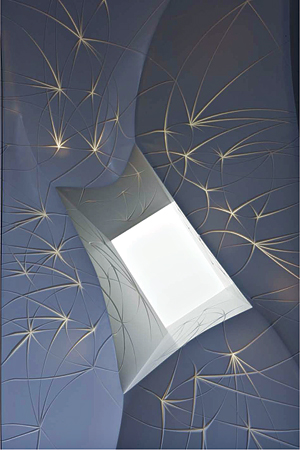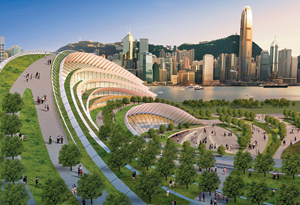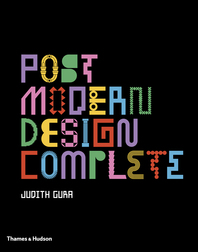In a global market, efficiency and speed are not enough.
The economic downturn of 2008 signaled the beginning of a dramatic period of global economic realignment in the future of architecture practice. Not only has China become the most vibrant market for architecture, but the demands placed on practitioners in various developing markets have also fundamentally begun to change the way architecture is designed and delivered at home and abroad.


Top: Andrew Bromberg of Aedas is designing the West Kowloon Terminus
Technologies, such as building information modeling and integrated-product delivery, have enabled architecture firms to design better buildings and deliver them more quickly and more efficiently. Yet in today's fiercely competitive global marketplace, efficiency and speed alone are not enough to guarantee market viability. The real differentiator is design—as an engine of innovation and a productive force for creating economic value.
“Starchitects” dominated the early years of this realignment by focusing on design marked by a national identity and a signature style. Since 2008, a new breed of global architecture practitioner, unencumbered by style or national identity, has begun to redefine the vanguard of global design practice. A number of these new practitioners seem to have found the conditions in Hong Kong suitable to their ambitions, including 10 Design, a medium-size architecture and planning firm whose partners, all from RMJM (formerly known as Robert Matthew, Johnson-Marshall & Partners) joined together last year to focus (first) on Asia.
Perhaps the most successful of these new practitioners, however, is architect Andrew Bromberg, who trained in the United States, but moved to Hong Kong 10 years ago to work for Aedas. Bromberg was hired specifically to elevate the design profile of the global architecture giant, founded in 2002, and has been extremely successful. So far his 40-member design team has completed a significant number of buildings in the Emirates and China, including the 83-story Ocean Heights residential tower (2010) in Dubai and the North Star mixed-use development in Beijing (2009).
Unlike star architects who import and apply the same signature style everywhere, Bromberg's designs change with—and are changed by—each project. His designs respond to the specific demands of the sites and clients, yet depend on knowledge created in previous projects. Bromberg's many early successful competition experiences in China gave him a way to think about design and buildings as prototypes, so new design knowledge would help him to design the next project more quickly and skillfully. Bromberg also thinks about designs parametrically, a skill he honed with the many towers he designed and built in the Emirates. He has a remarkable ability to see dozens of design moves ahead, which allows him to rapidly produce the one design idea seemingly immune to the shifting demands of the client and the marketplace. With Bromberg, these two ways of approaching design are mutually reinforcing.
DavidClovers is a 10-person architecture and design firm established two years ago in Hong Kong by David Erdman (formerly of servo in Los Angeles) and Clover Lee (formerly of plusClover in Houston). From Los Angeles and Houston, they brought an extensive digital design and fabrication research agenda. Focused on patterns, surface manipulation, and interior massing, it has permitted them to design across a variety of scales, from furniture to interiors to facades. In the United States, Erdman and Lee's work stayed based in experiment and research, but in Hong Kong the two have been able to exploit their research for real projects.
The two architects have often partnered with developers and other clients who need high-level design expertise, but who do not want to import it. Being in Hong Kong has given them a distinct competitive advantage over similar types of firms based in the United States.
In just two years, DavidClovers has found a steady stream of high-end residential and commercial projects, such as a 52-room hotel tower interior and facade retrofit. Recently the firm began to take on larger-scale projects, like the design of a 55-acre parking garage and associated pavilions for a residential project in Zhuhai, China, slated for completion in 2013.
Design will continue to be the most valuable economic asset architects have at their disposal —for small research and design offices, ateliers within larger firms, or full-service practices. It is the single factor that will continue to give them a favorable position on the new frontiers of global modernization.
Michael Speaks, a RECORD contributing editor, is dean of the College of Design at the University of Kentucky.





Post a comment to this article
Report Abusive Comment